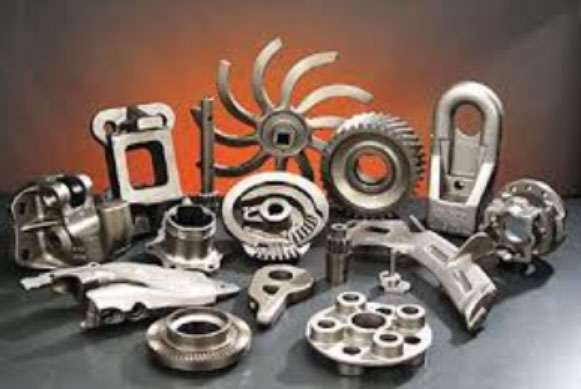Ductile iron casting plays a critical role in infrastructure development, contributing to the construction of strong, durable, and reliable structures. From bridges to pipelines, ductile iron castings offer a range of properties that make them ideal for infrastructure applications. This article explores the significance of ductile iron casting in infrastructure development and its benefits in constructing robust and long-lasting structures.

- Bridge Construction: Ductile iron casting finds extensive use in the construction of bridges, particularly for components such as bridge bearings, expansion joints, and connecting elements. These components must withstand heavy loads, temperature variations, and environmental factors. Ductile iron’s high strength, excellent load-bearing capacity, and resistance to corrosion and fatigue make it an ideal material choice for ensuring the structural integrity and longevity of bridge structures.
- Water and Sewer Systems: Ductile iron casting is widely utilized in the construction of water and sewer systems, including pipes, fittings, valves, and manhole covers. These components need to withstand high-pressure environments, resist corrosion from water and wastewater, and maintain their structural integrity over an extended service life. Ductile iron’s excellent mechanical properties, such as high tensile strength and impact resistance, combined with its corrosion resistance, make it a reliable choice for these critical infrastructure elements.
- Power Transmission and Distribution: Ductile iron casting plays a vital role in power transmission and distribution infrastructure, particularly in the construction of utility poles, crossarms, and insulator brackets. These components support electrical conductors and equipment, requiring high strength, stability, and resistance to environmental factors. Ductile iron’s ability to withstand mechanical stresses, extreme weather conditions, and its fire resistance characteristics make it an optimal material for ensuring reliable and resilient power infrastructure.
- Railway Infrastructure: Ductile iron casting is extensively used in railway infrastructure, including the construction of rail tracks, signal structures, and platform fittings. These components must endure heavy loads, repetitive impacts, and continuous vibrations. Ductile iron’s exceptional fatigue resistance, high damping capacity, and ability to withstand dynamic loading make it well-suited for railway applications, contributing to the safety, stability, and longevity of rail networks.
- Construction Equipment: Ductile iron casting also plays a crucial role in the manufacturing of construction equipment and machinery. Components such as excavator parts, crane hooks, and earthmoving equipment rely on ductile iron’s high strength, toughness, and wear resistance to withstand the demanding conditions of construction sites. Ductile iron’s ability to withstand heavy loads, resist impact and abrasion, and retain dimensional stability under challenging operating conditions makes it an essential material in the construction industry.
- Cost-Effective Solution: Ductile iron casting offers a cost-effective solution for infrastructure development. Its high production efficiency, recyclability, and long service life contribute to overall cost savings. Moreover, ductile iron’s excellent machinability and castability allow for the production of complex and customized components, reducing the need for additional manufacturing processes and assembly operations.
In summary, ductile iron casting plays a pivotal role in infrastructure development by providing strong and reliable components for various applications. Its superior mechanical properties, corrosion resistance, and durability make it an ideal material choice for constructing bridges, water and sewer systems, power transmission networks, railway infrastructure, and construction equipment. By utilizing ductile iron castings, infrastructure projects can be built with confidence, ensuring the longevity, safety, and resilience of our built environment.
